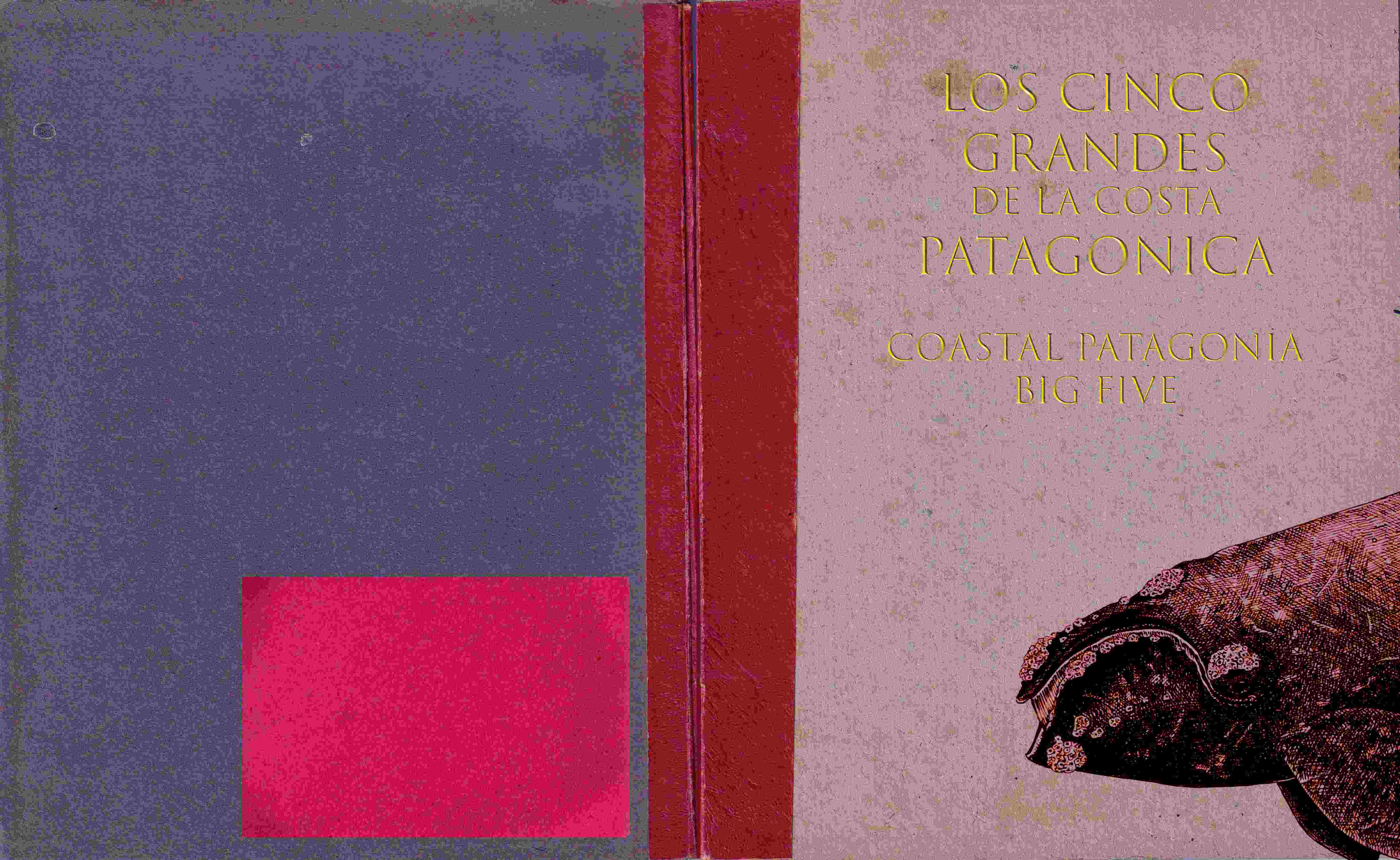
Cover

Argentina has an economic support program for translations for those publishers that purchase rights to books by Argentine authors. Click here for more information.
Original title: Coastal Patagonia Big Five / Los cinco grandes de la costa patagónica
Writer: Juan de Souza
Illustrator: Juan de Souza
Original Publication: Original Publication
Format: 8.13 Width x 10.8 Height (in inches) Currently 60% of the illustrated pages are finished together with their texts in Spanish. As the book wants to be bilingual, the texts are being translated with quality
Rights details: Rights reserved
About the book:
El origen de este término nace en África y se refiere a un conjunto extraordinario de cinco animales: el león, el leopardo, el rinoceronte negro, el elefante y el búfalo cafre. Su poco noble referencia como los "cinco grandes de África" o “Big Five” no se debe al tamaño de estos animales, sino por la alusión que hacían los cazadores del siglo XIX de las cinco presas más difíciles de cazar a pie. En la actualidad este término se popularizó y se adaptó con fines turísticos para la gente interesada en observar y fotografiar naturaleza, dando lugar a que diversos países crearan sus propias listas de sus cinco grandes para fomentar alternativas de desarrollo económico, entre ellas el turismo.
En este libro di prioridad a cinco especies de animales marinos que se destacan por la atracción que generan en el turismo nacional e internacional que visita la Argentina. La Patagonia argentina se caracteriza por su rica diversidad natural, con especies representativas y carismáticas; muchas de ellas tienen diferentes problemas de conservación y, en el caso de los cinco grandes aquí escogidos, se caracterizan por estar recuperándose de los serios riesgos de extinción que sufrieron en épocas pasadas.
La selección de los animales que integran los cinco grandes de la Patagonia para este libro es subjetiva. Otras posibles especies candidatas de merecida consideración hubieran podido ser -entre otros- el huemul, el cóndor, la tonina overa, el choique, el pingüino de penacho amarillo, los albatros, el macá tobiano, la mara, el lobo marino de dos pelos, el guanaco y el puma. Agradezco la comprensión del lector por esta selección, sabiendo que existen justificativos para pensar en otros cinco grandes que podrían, por su propia relevancia, reemplazar a los aquí escogidos.
Es mi deseo que este libro ofrezca al lector ocasional la posibilidad de pensar en la conservación de las especies y sus ambientes, y pueda ser utilizado en educación ambiental. Es difícil esperar que una persona se conmueva por algo que no conoce o que no haya experimentado. Por ello una generación humana más sensible a la naturaleza y con mayor conciencia de su rol en nuestra vida cotidiana hará mejores aportes a los desafíos de la biodiversidad presente, para que otros en el futuro puedan verla como nosotros. Que estos cinco grandes de la Patagonia se multipliquen para que todas las especies tengan su oportunidad en este mundo, y el que quede.
The origin of this term is born in Africa and refers to an extraordinary set of five animals: the lion, the leopard, the black rhinoceros, the elephant and the cape buffalo. Its not very noble reference as the "big five of Africa" or "Big Five" is not due to the size of these animals, but because of the allusion made by 19th century hunters to the five most difficult prey to hunt on foot. At present, this term has become popular and adapted for tourism purposes for people interested in observing and photographing nature, giving rise to various countries creating their own lists of their five big ones to promote economic development alternatives, including tourism.
In this book, I gave priority to five species of marine animals that stand out for the attraction they generate in national and international tourism that visits Argentina. Argentine Patagonia is characterized by its rich natural diversity, with representative and charismatic species; Many of them have different conservation problems and, in the case of the five big ones chosen here, they are characterized by being recovering from the serious risks of extinction they suffered in past times.
The selection of the animals that make up the Big Five of Patagonia for this book is subjective. Other possible candidate species worthy of consideration could have been -among others- the huemul, the condor, the tonina overa, the rhea, the rockhopper penguin, the albatross, the macá tobiano, the mara, the fur seal, the guanaco and the puma. I appreciate the reader's understanding of this selection, knowing that there are justifications for thinking of another five great ones that could, due to their own relevance, replace those chosen here.
It is my wish that this book offers the occasional reader the possibility of thinking about the conservation of species and their environments, and that it can be used in environmental education. It is difficult to expect a person to be moved by something they do not know or have not experienced. For this reason, a human generation that is more sensitive to nature and with greater awareness of its role in our daily lives will make better contributions to the challenges of present biodiversity, so that others in the future can see it as we do. May these five great Patagonians multiply so that all species have their chance in this world, and whoever remains.